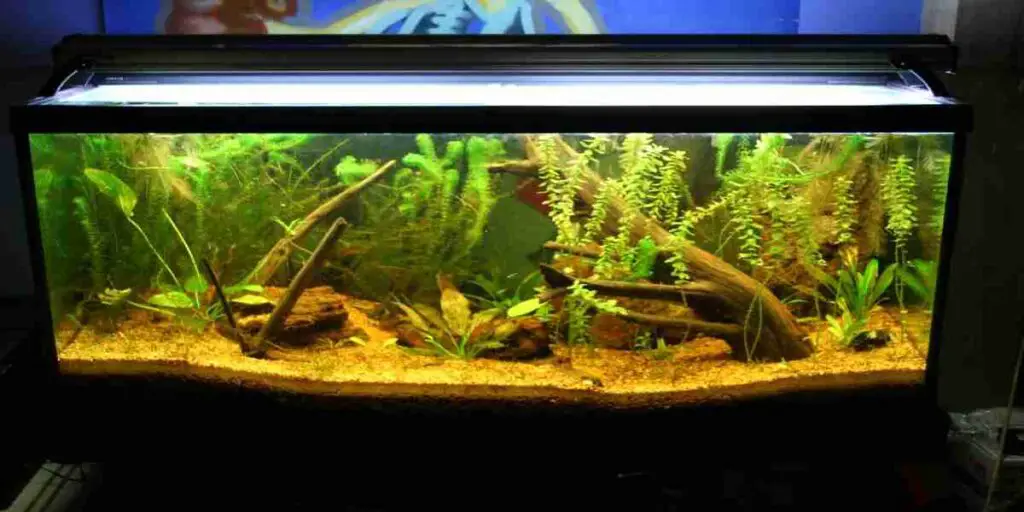Discover the ideal size of a 5 gallon tank. Get insights on tank dimensions and suitability for your needs.

A 5-gallon tank can be a captivating addition to your living space, whether you’re a newcomer to fishkeeping or simply short on room. It provides a compact canvas for creating a thriving aquatic ecosystem. In this informative and conversational guide, we’ll walk you through the essential steps to set up and maintain a 5-gallon fish tank, ensuring your underwater world thrives.
- What to Consider When Choosing a 5 Gallon Tank
- How to Set Up a 5 Gallon Tank
- 1. Choose the Right Location for Your Tank
- 2. Add Substrate and Decorations
- 3. Fill the Tank with Water
- 4. Install a Filter and Heater (If Needed)
- 5. Cycle the Tank
- 6. Choose the Right Fish
- 7. Acclimate Your Fish
- 8. Monitor Water Parameters
- 9. Perform Routine Water Changes
- 10. Feed Your Fish Appropriately
- 11. Maintain Equipment and Watch for Signs of Illness
- Conclusion
What to Consider When Choosing a 5 Gallon Tank
Before diving in, it’s crucial to consider a few key factors:
- Fish Type: Different fish have varying space requirements. While betta fish and some small species thrive in compact tanks, larger fish like goldfish need more room to stretch their fins.
- Fish Quantity: Avoid overcrowding your tank. A general rule is to have 1 inch of fish per gallon of water, which means your 5-gallon tank can comfortably accommodate fish up to 5 inches in total length.
- Available Space: Even a small tank needs a designated, stable location. Ensure it’s away from direct sunlight and drafts.
- Budget: 5-gallon tanks come in various styles and price ranges, so choose one that suits your budget and desired features.
How to Set Up a 5 Gallon Tank
Now that you’ve selected the perfect tank let’s get started on setting it up:
1. Choose the Right Location for Your Tank
Find a spot away from direct sunlight and drafts. Stability is key, so pick a place where your tank won’t be frequently disturbed.
2. Add Substrate and Decorations
Create a visually appealing underwater landscape by adding a layer of substrate, such as colorful gravel or fine sand, to the tank’s bottom. Enhance it with decorations like rocks, plants, driftwood, or miniature underwater castles.
3. Fill the Tank with Water
Fill your tank with dechlorinated water to your desired level, leaving some space at the top to prevent spills when you add decorations or perform maintenance. Use a water conditioner to neutralize chlorine and chloramine commonly found in tap water.
4. Install a Filter and Heater (If Needed)
Depending on the fish you plan to keep, a filter and heater may be necessary. Filters maintain water quality by removing debris and promoting the growth of beneficial bacteria. Heaters are essential for tropical fish that require specific water temperatures. Ensure both are compatible with your tank’s size.
5. Cycle the Tank
Cycling your tank is a vital step in creating a stable environment. This process involves growing beneficial bacteria that break down harmful ammonia and nitrites produced by fish waste. You can cycle your tank using ammonia or by adding a bacterial starter product. It typically takes several weeks to complete.
6. Choose the Right Fish
Select fish species that thrive in a 5-gallon tank. Betta fish, guppies, endlers, shrimp, and snails are excellent choices. Avoid fish that grow too large or produce excessive waste, as they won’t be happy or healthy in such confined quarters.
7. Acclimate Your Fish
When bringing fish home, acclimate them to their new environment. Float their sealed bag in the tank for about 15-30 minutes to allow the water temperature to equalize. Gradually introduce them to the tank water by adding small amounts of tank water to their bag over this time.
8. Monitor Water Parameters
Regularly test the tank water for crucial parameters like ammonia, nitrites, nitrates, pH, and temperature. Keeping a log of these values will help ensure water quality remains stable and suitable for your fish.
9. Perform Routine Water Changes
Maintain optimal water quality by performing partial water changes of about 20-30% every 1-2 weeks. Use a siphon or small aquarium vacuum to remove debris from the substrate during these water changes.
10. Feed Your Fish Appropriately
Overfeeding can lead to poor water quality and health problems for your fish. Offer small, appropriate portions of high-quality fish food once or twice a day, depending on your fish’s needs.
11. Maintain Equipment and Watch for Signs of Illness
Regularly clean and maintain your filter to ensure it functions efficiently. Replace filter media as needed, and inspect the heater and other equipment to verify they are in good working condition. Keep a close eye on your fish for signs of illness, stress, or unusual behavior, and take prompt action if any concerns arise.
You May Also Like:
- Do Guppies Give Birth At Night
- Fish At Top Of Tank After Water Change
- Black Spots On Fish Tank Glass, Causes And Solutions
Conclusion
Setting up and maintaining a 5-gallon fish tank can be an incredibly rewarding and relaxing hobby. By thoughtfully selecting your fish, providing the right equipment and care, and diligently monitoring water quality, you can create a beautiful aquatic sanctuary in your own home.
Remember that each fish species has its unique requirements, so always research their needs and tailor your tank setup and care routine accordingly. With patience and dedication, you’ll find that a 5-gallon tank can offer endless wonder and enjoyment for both you and your aquatic companions.